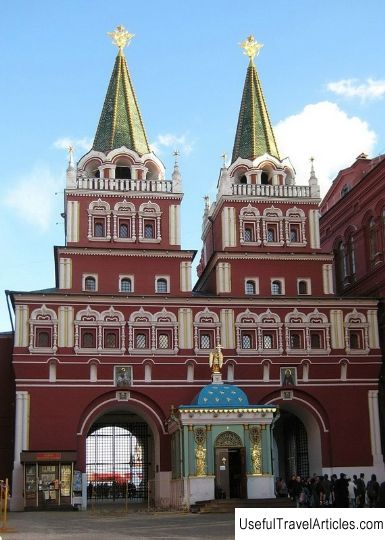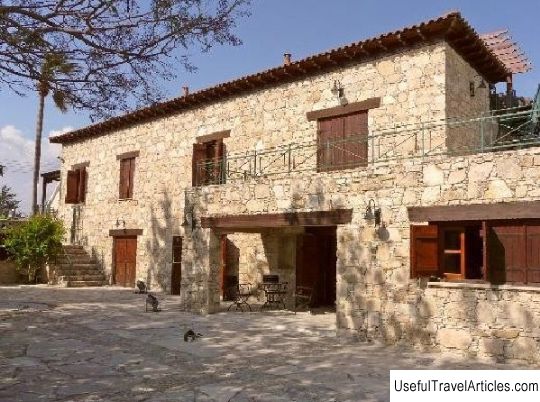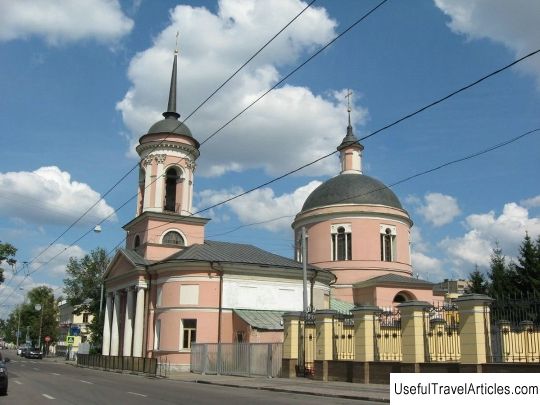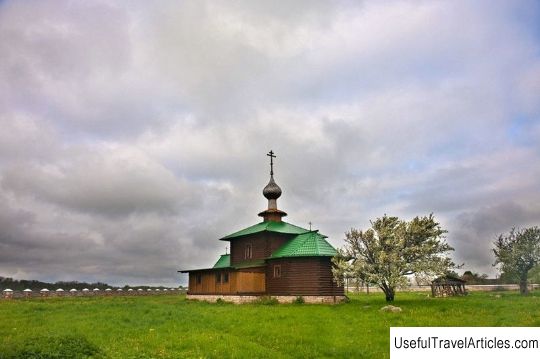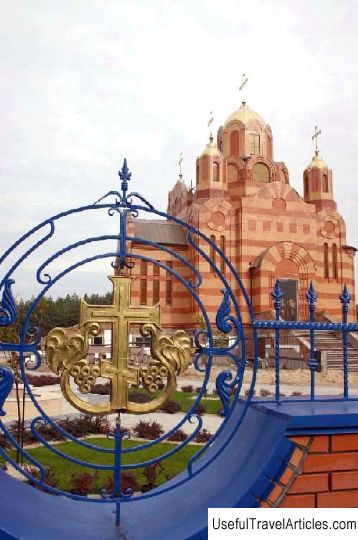Temple-chapel of the Iveron Icon of the Mother of God in Sivtsevoy Vrazhka description and photo - Russia - Moscow: Moscow
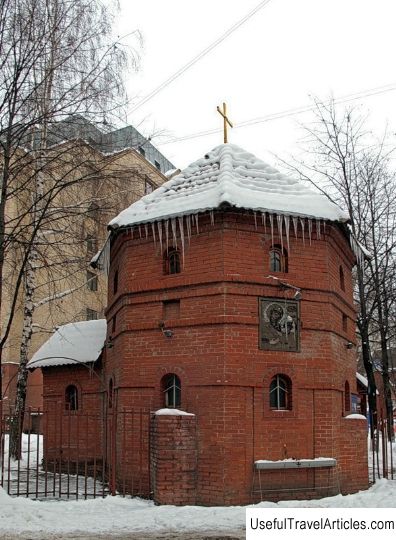
Temple-chapel of the Iveron Icon of the Mother of God in Sivtsevoy Vrazhka description and photo - Russia - Moscow: Moscow. Detailed information about the attraction. Description, photos and a map showing the nearest significant objects. Photo and descriptionThe temple-chapel of the Iveron Icon of the Mother of God in Sivtsevoy Vrazhka was erected in the period from 1993 to 1995. The chapel was consecrated on October 26, 1995 in honor of the Iberian Icon of the Mother of God. The chapel-church is at a secondary school with an ethnocultural Georgian component. Earlier (in 1988) a kindergarten for Georgian children was opened in the school building, and later a school was opened. The church-chapel of the Iberian Icon of the Mother of God is a small octagonal building. The building is tower-like without a dedicated apse. There is a vestibule on the west side of the building. The eight-pitched roof of the building is crowned with a cross. The history of the icon of the Mother of God "Iverskaya" "Vratnitsa" is interesting. In the 9th century, near the city of Nicaea (now the territory of Turkey), an icon of the Mother of God was located in the house of a pious widow. These were the times of iconoclasm. When the soldiers found the icon, whose purpose was to find and destroy the icons of the Mother of God, the widow begged to leave the icon until morning for a reward. The warriors agreed, but, leaving, one warrior stabbed the face of the Virgin with a spear. Instantly, blood flowed from the pierced icon. Frightened, the soldiers left. The widow took the icon to the sea and lowered it into the water, wishing to save the icon. The icon did not lay down on the water, but moved on the sea while standing. Two centuries later, the icon was acquired by the monks of the Iberian monastery in Athos. She was placed in the temple, but in the morning they found her over the gate. This was repeated several times. And so the Most Holy Theotokos appeared to the Monk Gabriel and said that she did not want to be kept by the monks, but wanted to be the Guardian herself. The monks erected a gate church. The miraculous icon is still in it. The “Iberian” icon is named after the monastery, and according to its location - “Gatewoman.” The miraculous icon was well known in Russia. During the reign of Alexei Mikhailovich, a copy of the icon was commissioned in the Iversky Athos Monastery. The board for the icon was made of cypress wood. After the Divine Liturgy, holy water and particles of holy relics were mixed. The icon painter mixed them with paints and painted the icon of the Mother of God. In October 1648, the icon was brought to Moscow. Tsar Alexei Mikhailovich, Patriarch Joseph and many people solemnly greeted her. Since then it has been one of the most revered Orthodox icons. The miraculous icon was well known in Russia. During the reign of Alexei Mikhailovich, a copy of the icon was commissioned in the Iversky Athos Monastery. The board for the icon was made of cypress wood. After the Divine Liturgy, they mixed holy water and pieces of holy relics. The icon painter mixed them with paints and painted the icon of the Mother of God. In October 1648, the icon was brought to Moscow. Tsar Alexei Mikhailovich, Patriarch Joseph and many people solemnly greeted her. Since then it has been one of the most revered Orthodox icons. The miraculous icon was well known in Russia. During the reign of Alexei Mikhailovich, a copy of the icon was commissioned in the Iversky Athos Monastery. The board for the icon was made of cypress wood. After the Divine Liturgy, holy water and particles of holy relics were mixed. The icon painter mixed them with paints and painted the icon of the Mother of God. In October 1648, the icon was brought to Moscow. Tsar Alexei Mikhailovich, Patriarch Joseph and many people solemnly greeted her. Since then it has been one of the most revered Orthodox icons. In October 1648, the icon was brought to Moscow. Tsar Alexei Mikhailovich, Patriarch Joseph and many people solemnly greeted her. Since then it has been one of the most revered Orthodox icons. In October 1648, the icon was brought to Moscow. Tsar Alexei Mikhailovich, Patriarch Joseph and many people solemnly greeted her. Since then it has been one of the most revered Orthodox icons.     We also recommend reading Mstislavl Historical and Archaeological Museum description and photos - Belarus: Mstislavl Topic: Temple-chapel of the Iveron Icon of the Mother of God in Sivtsevoy Vrazhka description and photo - Russia - Moscow: Moscow. |
